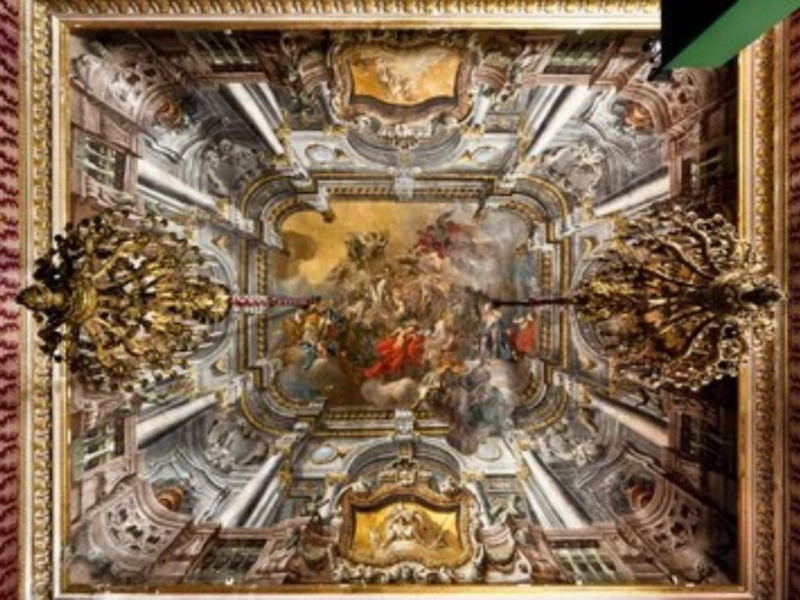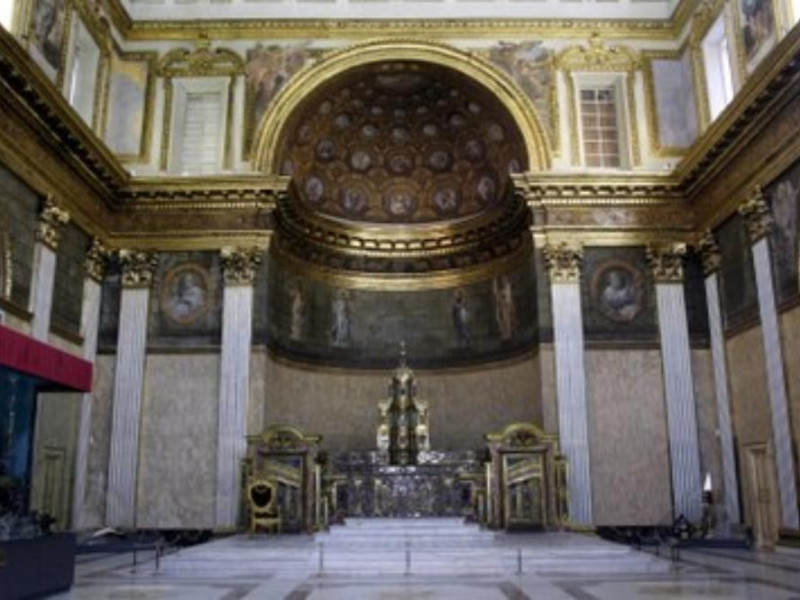Appartamento Storico
The setting of '"court entrance" is represented by the staircase of honor, which is accessed from the main courtyard of the Palace, built by Francesco Antonio Picchiatti (1651-66) and then modified and decorated by Gaetano Genovese (1838-58 ). The lower area is decorated with military trophies and allegorical bas-reliefs while the rich marble balustrade has two nineteenth-century cast-iron street lamps manufactured in the Royal Factory of Pietrarsa; in the center, the arms of Savoy. The staircase leads into a bright Ambulatory, originally an open loggia, now protected by the nineteenth-century stained-glass windows, which overlook the historic rooms of the Apartment, the Court Theatre and the Royal Chapel. The "Great apartment " by Ferdinand II of Borbone is a museological "Historical Apartment"; inside it is posible to visit some rooms in which there were held some institutional functions and representation. These rooms are beautifully decorated and adorned with paintings, statues, tapestries and antique furniture. The setting corresponds mostly to the arrangement of the Savoy Palace in age, although the seventeenth century still plays an important role in the decoration of the ceiling frescoes of historical subjects designed to enhance the glory of the Spanish winners and also the artistic eighteenth and nineteenth century that documents the illustrious role of the Royal Palace. The room of Maria Cristina leads in the apartments inhabited until 1837; Study of the King, richly furnished with Weisweiler - up to the Hall of Hercules, home of balls and receptions, built in the middle of the seventeenth century and today characterized by the tapestries of the series of "Cupid and Psyche" by the Royal Factory of Naples fabrics Pietro Duranti on cartons and Alessandro Fedele Fischetti between 1783 and 1789. The Court Theatre, the old "Royal Hall" seventeenth-century destined to party and shows with mobile devices, has its set up done by Ferdinando Fuga in 1768. On the eastern side of the loggia opens the Palatine Chapel, built starting from 1646, designed by Cosimo Fanzago and dedicated to the Assumption, then rearranged between 1808-15 by Antonio De Simone and then by Gaetano Genovese and finally heavily remodeled in the Second World War; inside, the main altar from the church of St. Teresa of Education, by Dionisio Lazzari of great splendor with semi-precious stones, agate, lapis lazuli, onyx, jasper and amethyst; on the ceiling the Assumption of Domenico Morelli. In the Chapel takes place the permanent exhibition "Sacred Art of Building" within which was recently set up the precious Nativity of the Banco di Napoli with sculptures of the eighteenth and nineteenth centuries.



